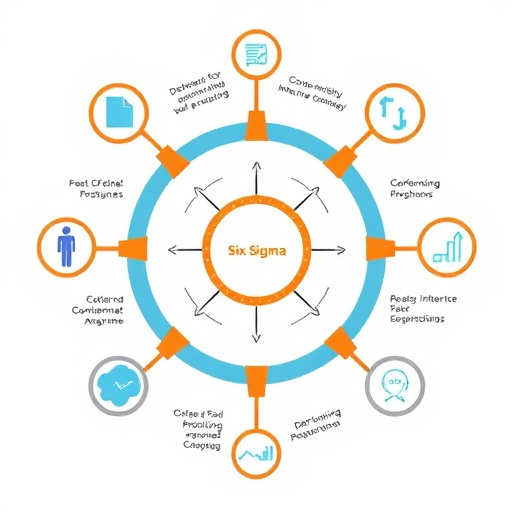In Six Sigma, Six Sigma Key Metrics and Tools are crucial for project success, focusing on user-centric factors that impact product/service quality. Critical to Quality (CTQ) metrics guide teams through data-driven decisions using tools like statistical process control (SPC) and root cause analysis (RCA), enhancing overall quality and reducing defects. By strategically tracking KPIs related to customer satisfaction, product quality, and operational efficiency, organizations can achieve process excellence, continuous improvement, and measurable results aligned with business objectives.
“Unleash the power of CTQ (Critical to Quality) in your Six Sigma projects and transform processes into excellence. This comprehensive guide explores the fundamental concept of CTQ, its integral role in Six Sigma frameworks, and how it drives project success. We’ll delve into key metrics that measure CTQ effectiveness, providing a roadmap for quality improvement. Discover practical tools designed to implement CTQs seamlessly, ensuring your Six Sigma initiatives deliver tangible results. Enhance your understanding of Six Sigma Key Metrics and Tools with this insightful exploration.”
- Understanding CTQ: The Core Concept
- Six Sigma Projects: A Glimpse into the Framework
- Key Metrics: Measuring Success with CTQs
- Tools for Effective CTQ Implementation
Understanding CTQ: The Core Concept

Critical to Quality (CTQ) is a fundamental concept within Six Sigma, acting as the cornerstone for defining key metrics and driving project success. It involves identifying the primary factors that significantly impact product or service quality from the end-user’s perspective. By focusing on these CTQs, Six Sigma projects can effectively target areas where improvements will have the most significant effect.
CTQ analysis empowers teams to utilize powerful tools like statistical process control (SPC) and root cause analysis (RCA). These tools help in quantifying and monitoring CTQs, allowing for data-driven decisions. By systematically studying these critical metrics, organizations can enhance overall quality, reduce defects, and optimize processes, ultimately achieving the desired Six Sigma levels.
Six Sigma Projects: A Glimpse into the Framework

Six Sigma Projects is a data-driven quality improvement methodology that aims to eliminate defects, reduce variability, and increase process efficiency. At its core, it revolves around defining specific goals, measuring key performance indicators (KPIs), analyzing root causes of issues, implementing solutions, and continuously monitoring processes. This framework leverages powerful tools like statistical analysis, process mapping, and defect prevention strategies to achieve remarkable results.
The success of Six Sigma initiatives heavily relies on the careful selection and tracking of Six Sigma Key Metrics and Tools. These metrics provide insights into various aspects of a process, enabling project teams to identify bottlenecks, set achievable targets, and measure progress effectively. By utilizing these tools and continuously refining processes based on data-backed insights, organizations can achieve significant enhancements in product or service quality, customer satisfaction, and overall operational efficiency.
Key Metrics: Measuring Success with CTQs

In the realm of Six Sigma projects, CTQ (Critical to Quality) serves as the backbone, guiding teams toward unparalleled process excellence. Measuring success with CTQs is a meticulous art, one that relies on robust Six Sigma key metrics and tools. These metrics transform data into actionable insights, enabling professionals to objectively assess project performance and make informed adjustments. By tracking key performance indicators (KPIs) directly linked to customer satisfaction, product quality, and operational efficiency, teams can identify bottlenecks, root causes, and areas for improvement.
Six Sigma key metrics and tools facilitate a data-driven approach, fostering a culture of continuous improvement. These measurements go beyond basic output or production rates, delving into defect reduction ratios, cycle time improvements, and process capability indices. Through sophisticated statistical analysis and visual dashboards, teams can navigate complex data landscapes, uncover trends, and make strategic decisions that drive measurable results. Ultimately, this CTQ-centric methodology ensures projects stay on track, aligning with overall business objectives and delivering tangible value to stakeholders.
Tools for Effective CTQ Implementation

Implementing CTQ (Critical to Quality) effectively within Six Sigma projects relies on a robust set of key metrics and tools. These metrics serve as compasses, guiding teams toward process perfection by identifying and measuring aspects that significantly impact product or service quality. By focusing on these critical factors, organizations can achieve substantial improvements in efficiency and customer satisfaction.
Tools like statistical analysis software, data visualization dashboards, and process mapping techniques play a pivotal role in CTQ implementation. Statistical analysis aids in interpreting data patterns and trends, allowing teams to make data-driven decisions. Data visualization tools help communicate complex insights clearly, fostering collaboration among project stakeholders. Process mapping facilitates the visual representation of workflows, making it easier to identify bottlenecks and areas for improvement.
CTQ (Critical to Quality) is the linchpin that drives successful Six Sigma projects. By identifying and focusing on these key quality drivers, organizations can significantly enhance their processes, reduce defects, and improve overall customer satisfaction. Utilizing effective CTQ implementation tools and understanding core concepts, combined with precise measurement through Key Metrics, ensures that Six Sigma initiatives remain on track and deliver tangible results. This data-driven approach is vital for navigating complex projects and achieving remarkable quality improvements in today’s competitive business landscape.
